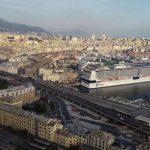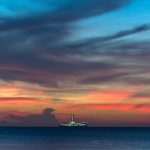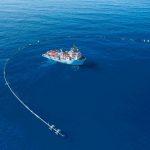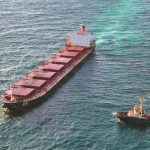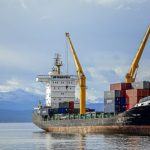The Port of Rotterdam in the Netherlands and the Port of Baie Comeau in Canada have agreed to jointly explore the potential for future growth and development of the Port of Baie-Comeau.
The ports have agreed to execute a master plan study including cargo flow analyses and technical port infrastructure assessments.
The study will also include analysis for production and use potential of green energy in the industrial zone, such as wind and solar power, bioenergy and green hydrogen.
“The plan will allow the port to fully play its role in the new decarbonized economy, focused on the optimal use of our infrastructure and resources for the benefit of the St. Lawrence economy, Quebec and the world,” Karine Otis, Executive Director of Port of Baie-Comeau, commented.
The two ports intend to work in close cooperation with the City of Baie-Comeau, Government of Canada, Government of Quebec, the Pessamit First Nation community and other regional and commercial stakeholders.
“Ports are an integral part of the world economy, serving as hubs for economic activity, employment, trade, and the flow of products and resources. They have also been the site of significant progress in innovation, clean technologies, and climate aligned best practices,” Jonathan WilkinsonMinister of Natural Resources Canada, said.
“I welcome this agreement between the Port of Baie-Comeau and the Port of Rotterdam Authority – it is an example of the kind of international collaboration we need to enhance our infrastructure, reinforce our supply chains, and support the expanded application and production of clean energy.”
The Société du Plan Nord is supporting this development plan by investing CAD $250,000. The amount awarded comes from the Opportunity envelope of the Government of Quebec’s 2020-2023 Northern Action Plan.
The Port of Rotterdam is a globally operating deep water seaport, with the capacity to handle the largest ships in the world, receiving 30,000 sea vessels per year. It stretches some 40-45 kilometres inland, and has both the port and industrial zone under its care.
It is the largest port in Europe and the number ten port in the world. Together with Houston and Singapore, it is also known for its bunkering facilities for ships, and it is the energy gateway for Europe, with some 13% of all energy consumed in Europe entering Europe via Rotterdam and meeting some 40% of industrial demand.
The green transition has been the most important strategic theme for the port in the past decade. The transition of the port to reduce carbon emissions and receive, handle and distribute the zero-emission fuels and feedstocks of the future is in full swing now, with major infrastructure projects and many activities going on to meet climate targets, positioning the port as one of the greenest ports in the world and as the hydrogen hub for NW Europe.
The Canadian East-Coast deep-water Port of Baie-Comeau recently changed ownership from Transport Canada to the Baie-Comeau Port Management Corporation. The port is situated in the Province of Québec, on the North Shore of the Saint Lawrence River, near the mouth of the Manicouagan River in the Baie des Anglais.
It now has a large Cargill cereals terminal and an Alcoa aluminium smelter, powered for 99% with electricity from green sources. The port provides logistic services for the mining and the manufacturing industry of North-East Quebec and is connected to the national railroad network leading to the American Midwest area and all major inland markets.
Its aim as a port is to further increase its capacity to be an exporting hub for the manufactured products, natural resources, mining, cereals and green energy industry in the area, as well as developing port and industrial areas to attract new green industry clients to operate in the port.
The port currently works as an overflow port also for other ports and terminals in the region and is keen to work together with ports and terminals in the vicinity that are now working to their maximum capacity.
Source: Offshore Energy


